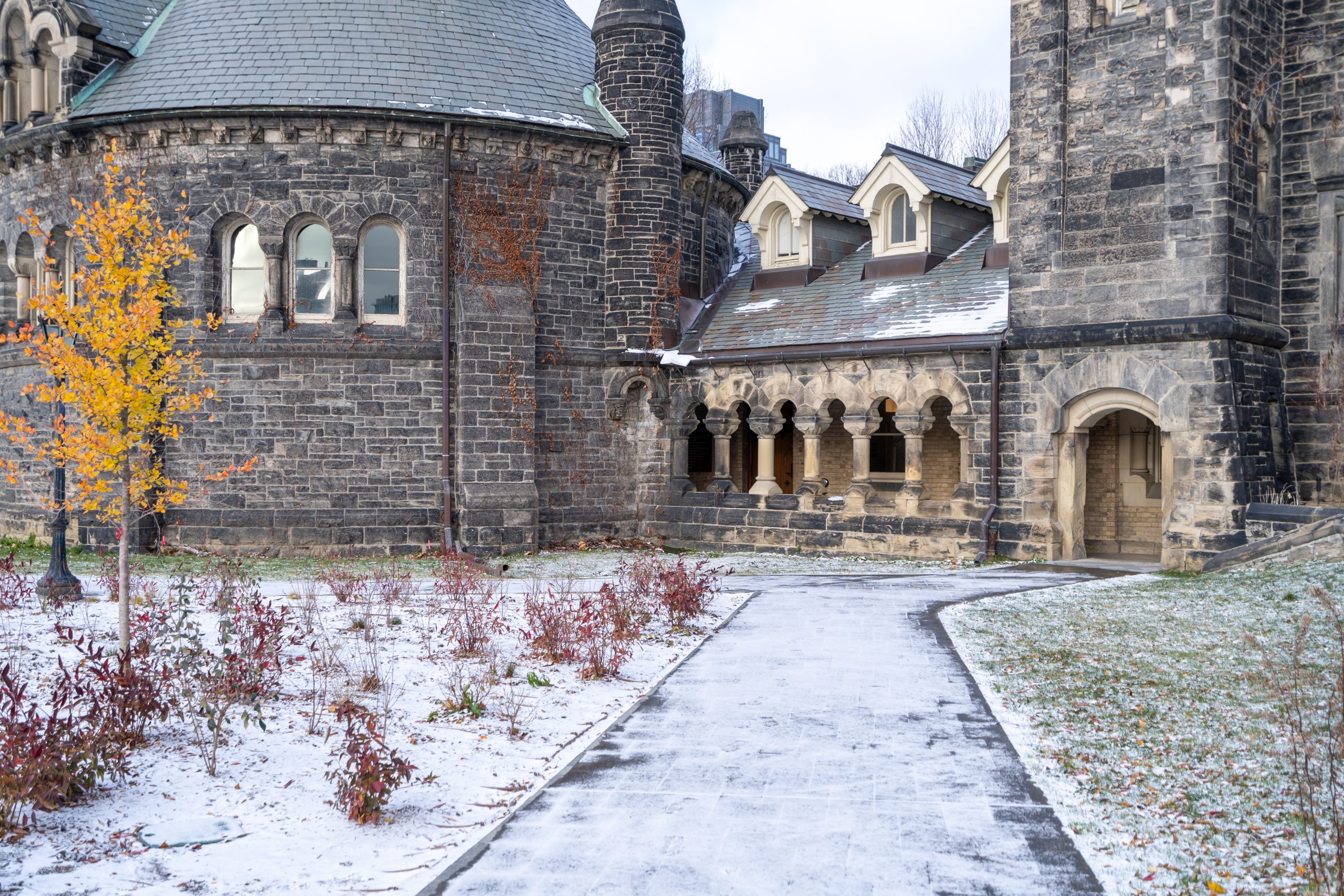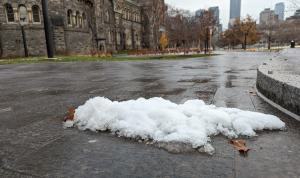A chilly challenge: how F&S tackles snow and ice sustainably
Learn how the grounds and caretaking teams manage winter conditions with more sustainable methods such as geothermal heating and battery-operated tools.
During the wintry months, F&S grounds and caretaking teams work tirelessly to ensure that everyone can safely navigate the St. George campus.
But how does the team do this in an environmentally conscious way?

First—goodbye gas
The teams mainly use manual tools—such as shovels and ice breakers—for stairs, pathways, and building entrances.
The grounds team has transitioned to battery-operated snowblowers and snow shovels—a notable departure from traditional gas-powered equipment. This transition will continue for larger snow removal equipment as products become available.
The University has also stopped using a diesel-powered snow-melting machine to control large accumulations.
Next—waterway-friendly chemicals
The most common de-icing method used on roads and sidewalks in Toronto (and on campus) is sodium chloride, also known as rock salt.

While effective, salt can corrode surfaces and poses a threat to local waterways when it mingles with melting runoff.
“We want to minimize anything harmful going into the water,” says Stan Szwagiel, manager of grounds services. “That’s why we try to avoid certain chemicals, such as chlorides.”
F&S has incorporated the use of calcium magnesium acetate as an alternative to rock salt, where possible. This substitute, composed of small pellets, is a more environmentally friendly and less abrasive solution. Its use helps safeguard environmentally sensitive areas such as historic buildings.
Finally—building in sustainability
The grounds and caretaking teams work closely with the Sustainability Office to continuously make their work more sustainable.
“We always want to use methods that have the least amount of environmental impact,” says Scott Hendershot, senior manager of the Sustainability Office. “But even more so, our goal is regenerative sustainability. In other words, we need to improve our shared environment, not just reduce damage to it.”

This innovative approach is showcased in the Landmark Project, which is set to come online for the 2024–2025 winter season and involves using energy from the geoexchange to supplement in-ground heating on many of the access paths surrounding King’s College Circle. This practice means that snow and ice can be eliminated before it can even accumulate.
The Facilities & Services grounds and caretaking team exemplifies principles at the heart of U of T’s sustainability mandate, embracing infrastructure changes and adopting new technologies to make environmentally friendly choices for our campus. Thanks to their hard work and commitment to regenerative sustainability, the University’s cutting-edge snow- and ice-management practices represent yet another example of how sustainability can be involved in all aspects of campus operations.
